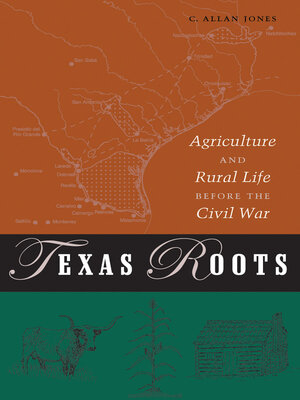Texas Roots
ebook ∣ Agriculture and Rural Life before the Civil War · Texas A&M University Agriculture Series
By C. Allan Jones

Sign up to save your library
With an OverDrive account, you can save your favorite libraries for at-a-glance information about availability. Find out more about OverDrive accounts.
Find this title in Libby, the library reading app by OverDrive.



Search for a digital library with this title
Title found at these libraries:
| Library Name | Distance |
|---|---|
| Loading... |
In today's Texas, with its growing urban populations and big-city lifestyles, it is worth remembering that in 1850 only 10 percent of Texans lived in towns with as many as 100 people. The rest—of many ethnic and racial groups—lived off the land, which was blessedly suited to a profitable variety of crops and livestock and also provided an abundance of wildlife free for the taking.
In Texas Roots, C. Allan Jones reminds us that the economic wealth of modern Texas arose from its agricultural heritage, a rich mixture of practices and traditions including:
Caddo hunting, gathering, gardening, and farming
Irrigated agriculture at Spanish missions
Hispanic ranching
Slave-based plantations
Small-scale farmers and ranchers
Through time, people adapted the agricultural technologies, laws, and customs of New Spain, Mexico, Europe, and the South to their own practical, institutional, and legal needs. The result was a particularly Texan system that would serve as the foundation for the state's economic strength after the Civil War.
Texas Roots shines a bright light on our relationship and connection with the land, bringing alive an aspect of the Texas history that contributed immeasurably to the state's identity and prosperity.
In Texas Roots, C. Allan Jones reminds us that the economic wealth of modern Texas arose from its agricultural heritage, a rich mixture of practices and traditions including:
Through time, people adapted the agricultural technologies, laws, and customs of New Spain, Mexico, Europe, and the South to their own practical, institutional, and legal needs. The result was a particularly Texan system that would serve as the foundation for the state's economic strength after the Civil War.
Texas Roots shines a bright light on our relationship and connection with the land, bringing alive an aspect of the Texas history that contributed immeasurably to the state's identity and prosperity.







